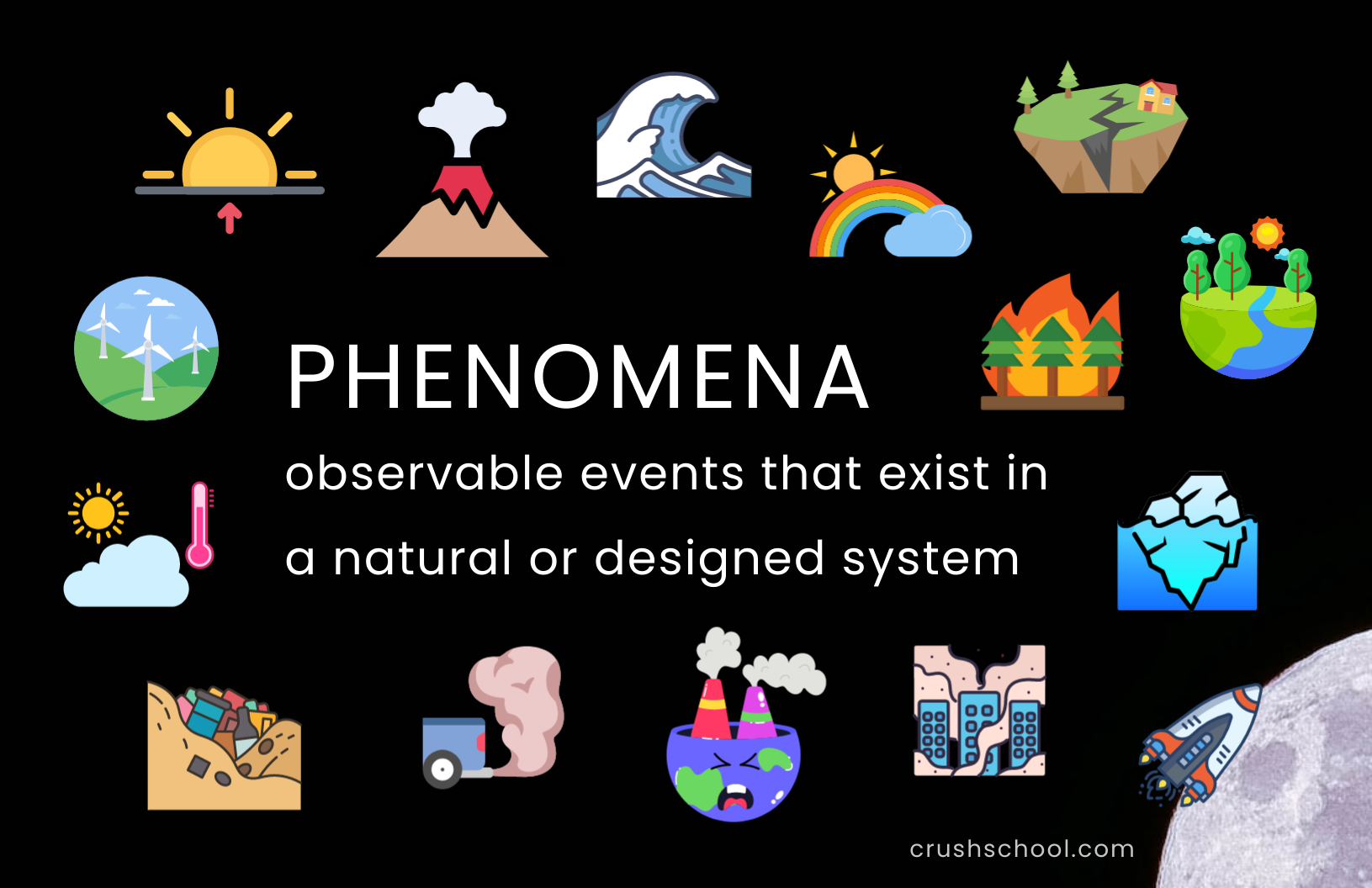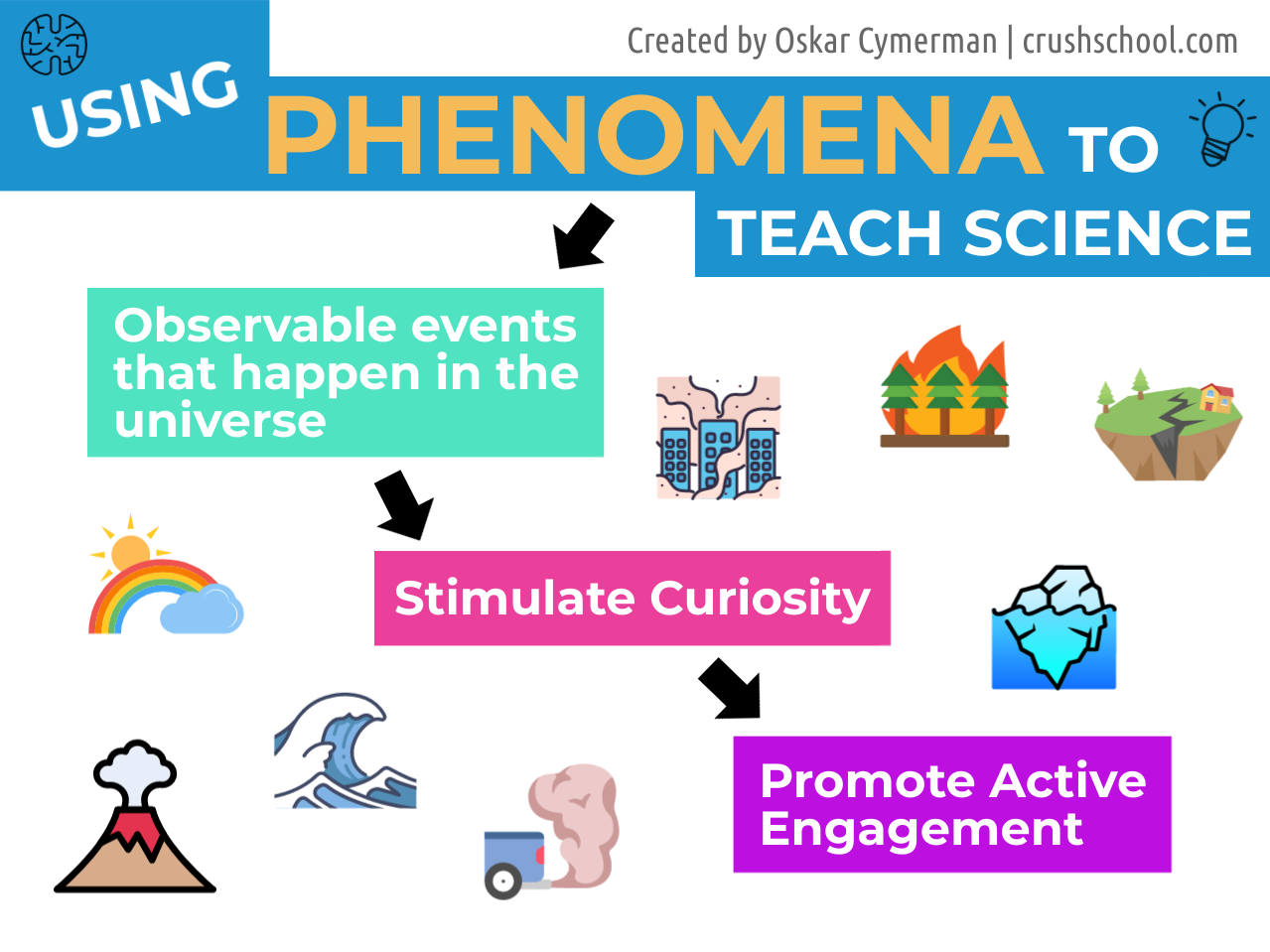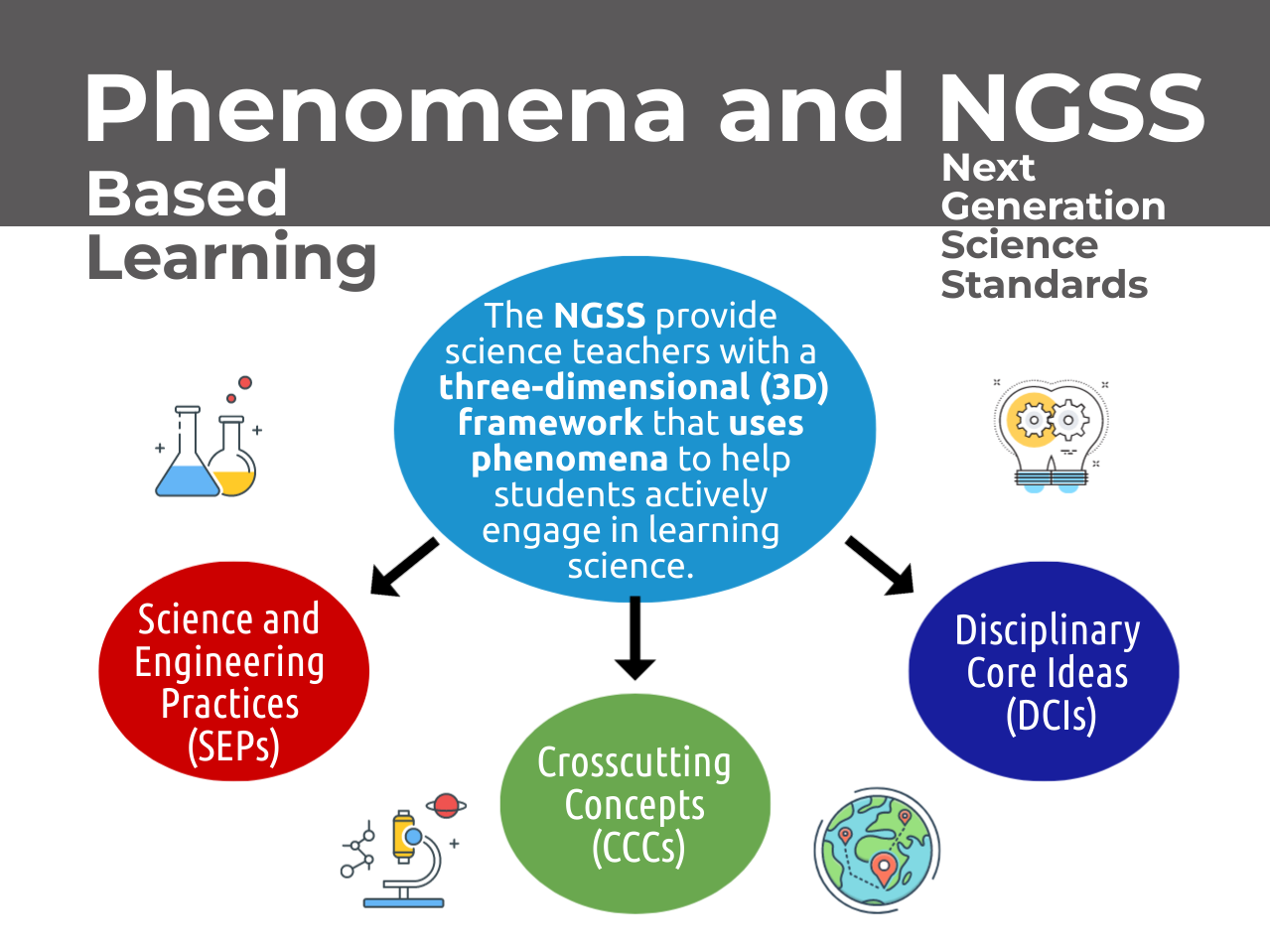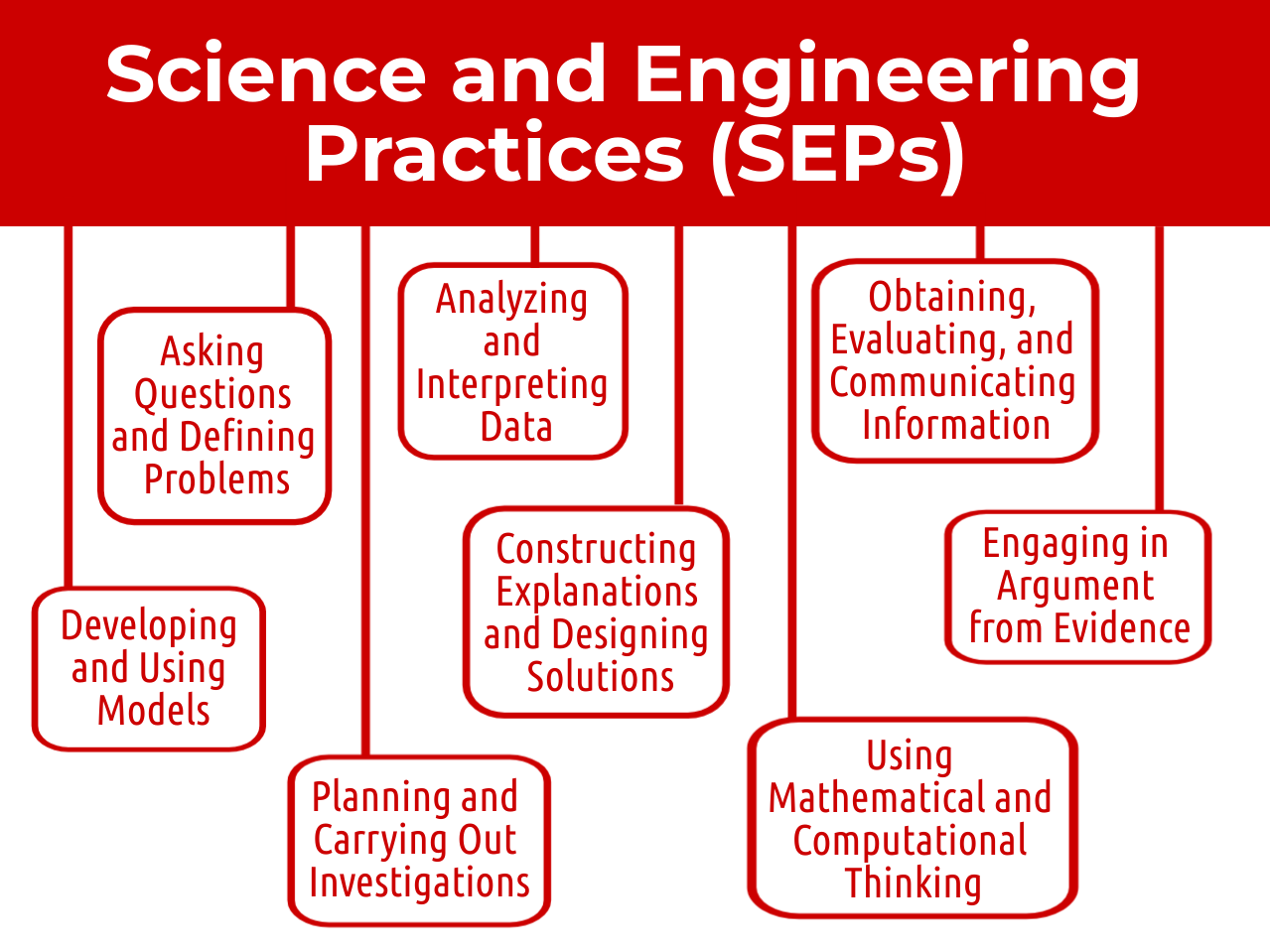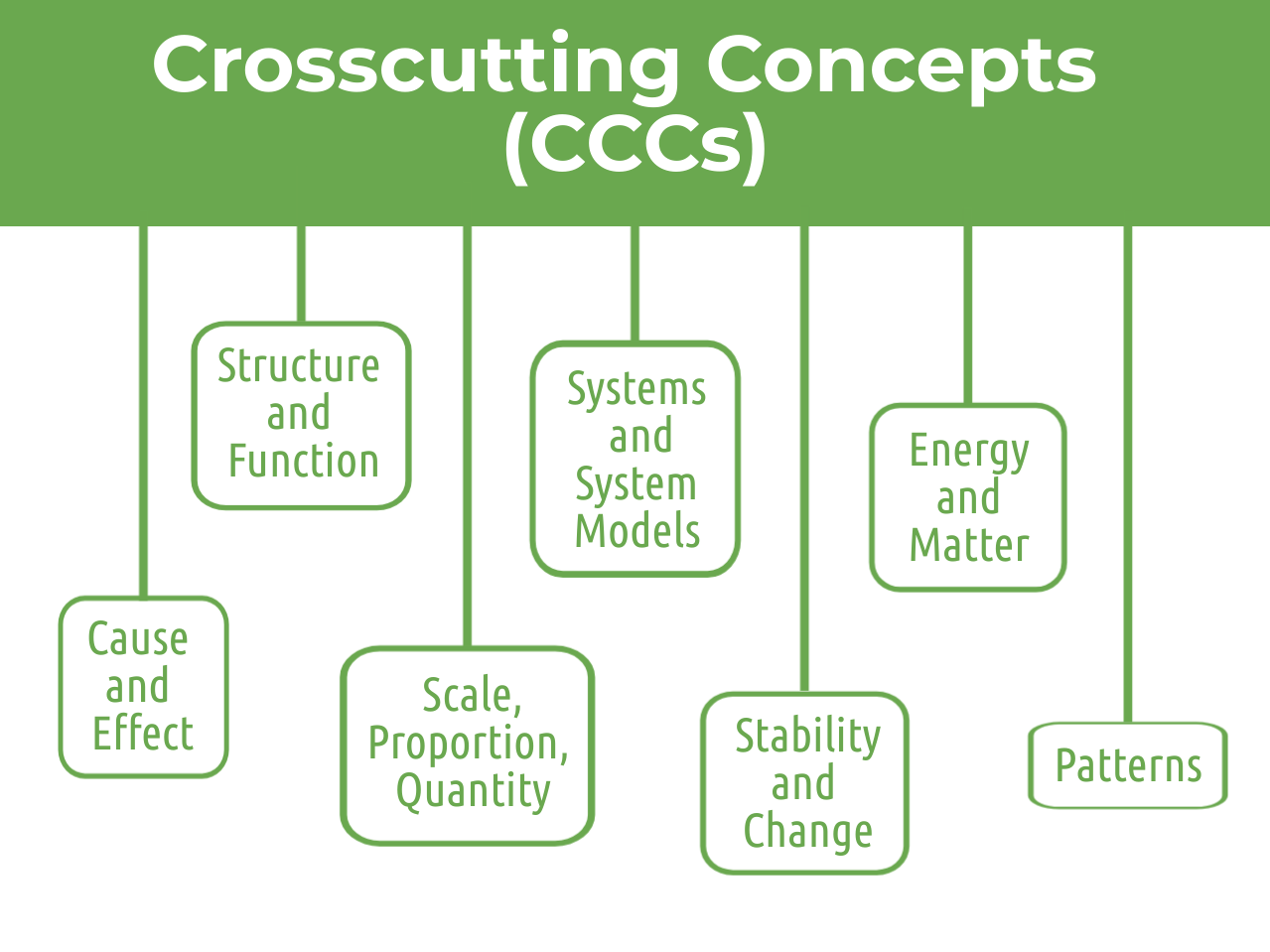Phenomenon-Based Learning Lessons: Choosing and Using Phenomena
Explained and exemplified, let’s talk about how to use phenomena in the classroom.
Before you Choose a Phenomenon
Use backwards design to plan for what you (and the state you teach in) want your students to learn. This involves using the main (core) idea (or ideas if more than one) of the lesson/unit and creating a concept map or an outline of the ideas that connect to it - ideas that help create and explain the whole picture. Check out my previous post: Where and How to Begin with Phenomenon-Based Learning if you’d like some help on this. Laying out the major content you want to focus on will lead you to the right phenomenon.
Choosing a Phenomenon: Part 1
Good phenomena address the content to be learned and are relevant and/or interesting to your students. This doesn’t mean that every phenomenon has to blow students’ minds (though mind blowing helps) but it is important to pick an event students can relate to somehow (you can create a common experience for your class to help with some difficult phenomena).
So, when choosing a phenomenon, consider (1) the content to be learned, (2) the diversity of your students, (3) the scope: does the phenomenon anchor the entire unit, or represents a part of one unit, or is used for a single lesson?, and (4) how you will present it to the students: video, image(s), school grounds stroll, field trip etc.
Beginning with a phenomenon
Beginning the lesson by showing students a phenomenon should stimulate student interest and get them thinking about the smaller (but important) concepts that ultimately tie into the core idea of the lesson. Most of the time, I use images or a video that may contain a prompt but do not give my students much background information. Rather, I aim to ignite the process of students investigating on their own while I guide them - ask leading questions, look for misconceptions, and ask them to dig deeper and revise their thinking if it strays. Initially, the hardest part was trusting in the process - that student-led exploration can lead to them discovering and understanding the core idea. This is why the teacher guidance is so important.
Let’s start exploring this process by examining the two phenomena examples below:
Social Studies (HS): Show students the Omaha Beach D-Day Landing movie clip from Saving Private Ryan and ask a question such as: 2,400 US soldiers died storming Omaha Beach on D-Day. Why was the US willing to enter WWII and sacrifice so many lives in mid-1944 after staying out of the war for nearly 5 years? You could use EdPuzzle to trim the video if you wish and add the question you want at the end, so students can view it and make some claims to answer the question in small groups before you discuss as a class.
Earth and Space Science (MS / HS): Show students the Diamond vs. Graphite image and pose this question: Each made of carbon; a diamond is forever, but graphite not so much. Why?
Each phenomenon is tied to the core idea. The Omaha Beach landing phenomenon does not beat around the bush - it is presented in a way that directly ties the event to the core idea of US entering WWII. 11th graders working in small groups can likely tackle this lesson in one day. The science example is more indirect - I am looking for my students to connect the differences between two forms of carbon and how different minerals form on Earth. Depending on the ensuing storyline I create, student might spend several days first investigating and then modeling the different mineral-forming processes.
Both phenomena cannot be answered with one sentence and require digging deeper. As students investigate, they find themselves asking new questions that require further investigation. Additionally, each phenomenon is either interesting or easy to relate to.
Choosing a Phenomenon: Part 2
Choosing an appropriate phenomenon can be challenging and may require some heavy thinking. The best way to get better at picking phenomena is picking phenomena. The more you create, the better you get at creating. Here’s the phenomenon recipe I use:
List different things, events etc. the core idea makes you think of.
Consider student age, interests, backgrounds, experiences etc.
Pick items from #2 that are relevant or interesting, question provoking, not easy to explain, and not super frustrating.
Use the list from #4 and find/create a phenomenon to represent it. You can Google: events related to ___________ or examples of _____________ - just be careful not to pick something that’s too simple.
And then there are times when it just appears to me. With practice, I am confident it will happen to you too. Or maybe you already are a phenomenon ninja and don’t yet know it. Dive into Phenomenon-Based Learning and find out.
My next post will explain How to Guide Student Investigations of Phenomena. Sign up for my Teaching Tips, Resources, & Ideas Newsletter to get it when it drops. It’s totally free.
BOOKS & TOOLS
- September 2025 2
- August 2025 5
- July 2025 4
- June 2025 2
- August 2024 2
- July 2024 2
- June 2024 1
- October 2023 1
- September 2023 3
- August 2023 6
- July 2023 6
- July 2022 2
- June 2022 1
- November 2020 3
- October 2020 3
- April 2020 1
- March 2020 5
- July 2019 1
- June 2019 1
- April 2019 1
- January 2019 1
- November 2018 3
- October 2018 2
- September 2018 1
- August 2018 8
- July 2018 11
- June 2018 4
- May 2018 5
- April 2018 2
- March 2018 4
- February 2018 5
- January 2018 3
- December 2017 1
- November 2017 5
- October 2017 7
- September 2017 6
- August 2017 5
- July 2017 3
- June 2017 10
- May 2017 7
- April 2017 7
- March 2017 15
- February 2017 12
- January 2017 13
- December 2016 15
- November 2016 8
- October 2016 7
- September 2016 12
- August 2016 14
- July 2016 10
- June 2016 13
- May 2016 10
- April 2016 8
- March 2016 5
- February 2016 7
- January 2016 6
- December 2015 5
- November 2015 8
- October 2015 2

